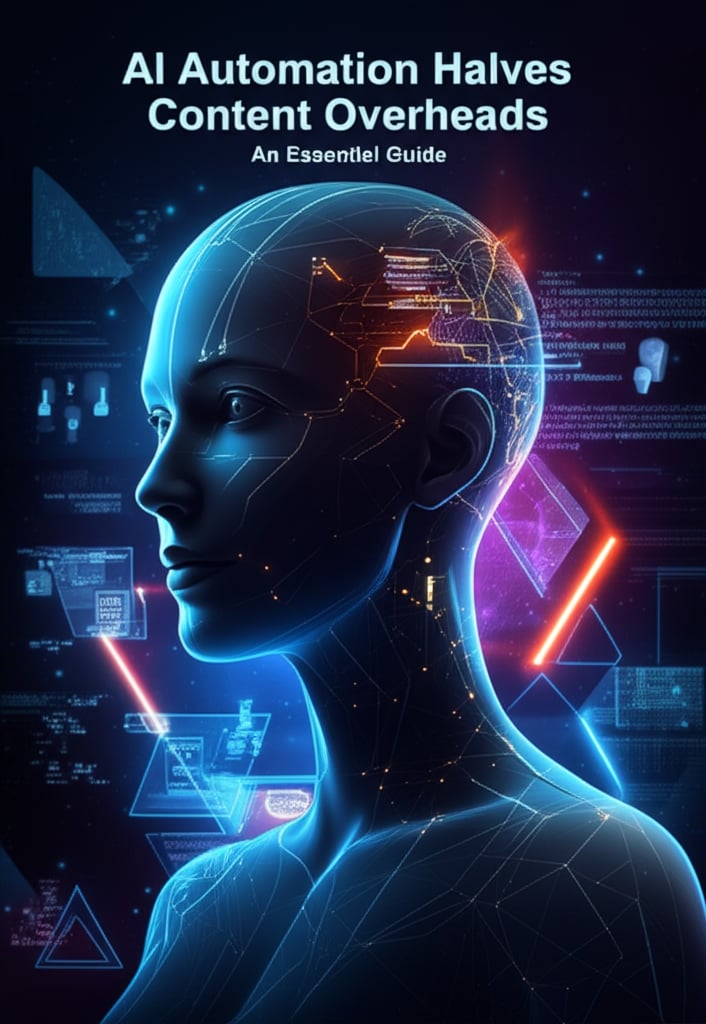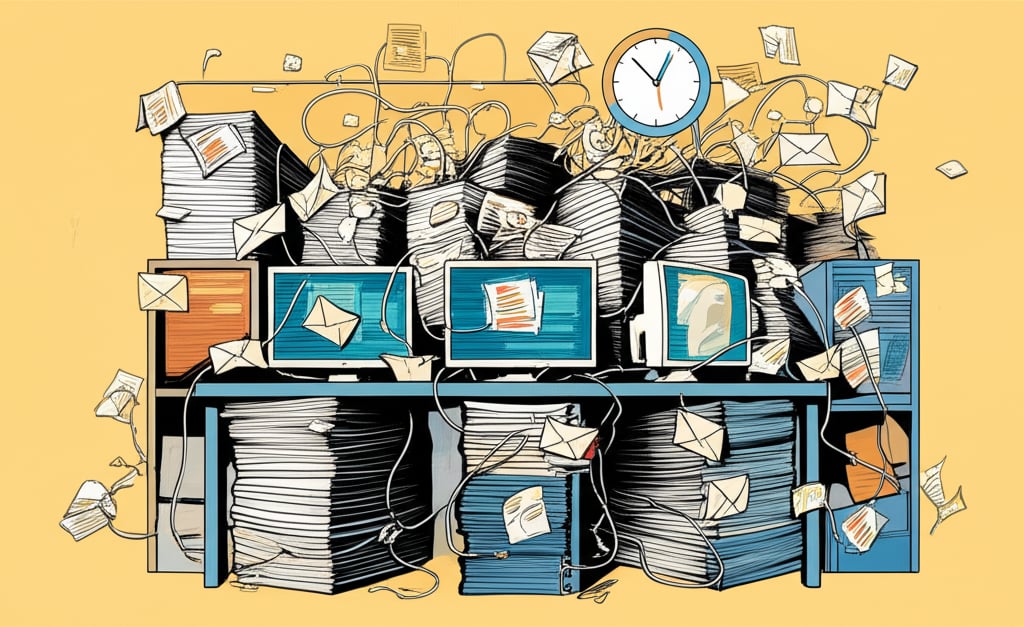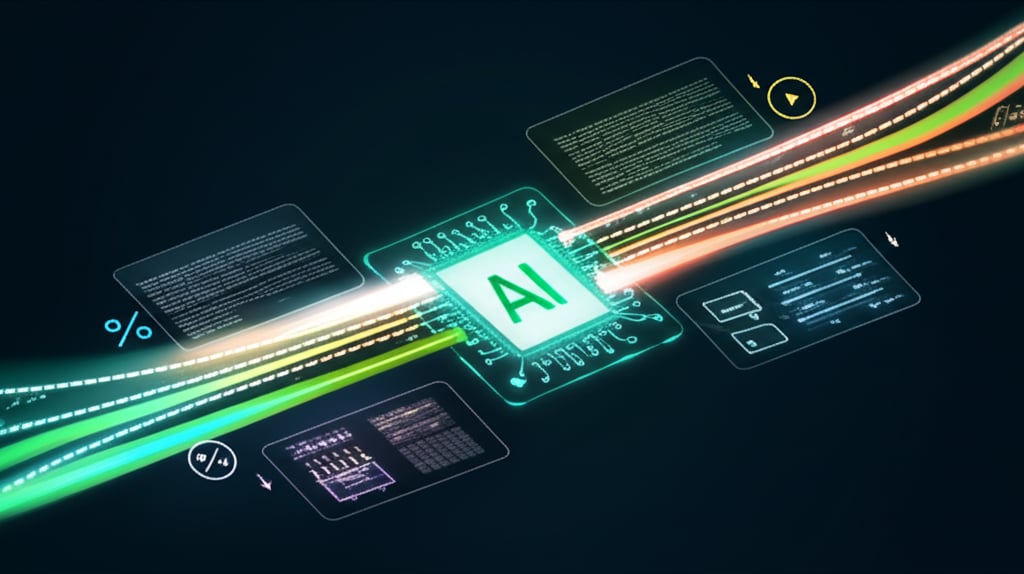AI Automation Halves Content Overheads: An Essential Guide

The relentless ascent of content creation expenditures frequently functions as an unseen siphon on marketing budgets, gradually diminishing potential returns. Conventional content workflows, weighed down by laborious manual tasks like research, composition, editing, and optimization, are inherently time-intensive and costly. However, a profound paradigm shift is now in motion. Enterprises embracing AI solutions within their marketing frameworks are realizing extraordinary gains, with some reports indicating an average return on investment of 300% by 2025, based on recent industry analyses. This profound influence underscores a crucial understanding: Artificial Intelligence is not merely an auxiliary tool, but a strategic imperative for streamlining content overheads and establishing a commanding market presence. This comprehensive guide will illuminate precisely how AI automation offers an unparalleled competitive edge, empowering organizations to effectively halve their content-related expenditures while significantly expanding their digital footprint.
The Swelling Costs of Conventional Content Generation

For a multitude of organizations, establishing and maintaining a robust content pipeline constitutes a formidable financial undertaking. The typical methodology is deeply rooted in extensive human effort, spanning from the initial stages of meticulous keyword research and content outlining to the arduous processes of drafting, undergoing multiple cycles of revisions, and finally, meticulous manual SEO integration. This human-capital-intensive approach inevitably culminates in elevated operational expenses, posing a significant hurdle for agile marketing departments striving to amplify their efforts without a corresponding surge in budgetary allocation or workforce size.
Contemporary market observations indicate that marketing professionals are frequently tasked with an extensive array of responsibilities, encompassing diverse domains such as search engine optimization, content strategy, social media engagement, email campaign management, and conversion rate optimization initiatives. The sheer magnitude of these duties often compels a reliance on antiquated, repetitive manual procedures. While individual initiatives may yield satisfactory results in isolation, they critically lack the inherent scalability requisite for achieving widespread and consistent market penetration. This predicament becomes even more pronounced when attempting to uphold a uniform brand identity or guarantee absolute originality across an expansive content repository, thereby surreptitiously inflating the concealed costs associated with stringent quality control and indispensable human oversight.
Key Takeaway: Traditional content creation processes are inherently resource-intensive, capable of subtly eroding marketing budgets, thereby impeding scalable expansion and hindering consistent output.
Next Up: Discover how AI strategically intervenes to alleviate these financial burdens.
AI's Strategic Impact on Content Overheads

Artificial Intelligence is fundamentally revolutionizing the economic landscape of content marketing through its capacity to automate vital, time-intensive processes. This pervasive integration across various marketing functions, including but not limited to content creation, in-depth customer analytics, and sophisticated campaign optimization, is rapidly evolving from a competitive advantage into a fundamental prerequisite for achieving High Performance in today's market. A striking 78% of organizations reported deploying AI in at least one business function by 2024, unequivocally signaling a widespread adoption trajectory.
AI's remarkable capability to generate initial drafts, meticulously conduct research, and even meticulously optimize for search engines liberates human marketers, enabling them to redirect their invaluable focus from repetitive, laborious tasks towards strategic oversight and nuanced creative refinement. This newfound efficiency directly translates into substantial reductions in operational expenditures. For instance, AI can adeptly repurpose a singular foundational blog post into a diverse array of formats—such as concise social media snippets, engaging email introductions, and compelling short video scripts—thereby drastically compressing overall content creation timelines. Furthermore, advanced AI-powered tools can accelerate complex keyword clustering analyses, intelligently generate compelling meta descriptions, and swiftly craft detailed content briefs, ensuring that foundational SEO Perfection tasks are executed with unparalleled speed and precision, eliminating the need to start from scratch.
By comprehensively harnessing the power of AI, businesses acquire the unprecedented capacity to produce a significantly greater volume of high-caliber content at merely a fraction of the conventional cost, effectively achieving the goal of halving content overheads. This profound efficiency empowers marketing teams to vastly extend their content reach, enabling them to strategically target an increased number of long-tail keywords and highly specific niche segments that would have previously been economically prohibitive using manual methods. This also opens avenues for more sophisticated strategies like Effortless Distribution across various channels.
Key Takeaway: AI automation dramatically slashes operational expenditures by streamlining every facet of content creation, research, and optimization, thereby facilitating higher output with significantly reduced manual effort.
Next Up: We will delve into the specific challenges and pragmatic solutions associated with integrating AI into existing content workflows.
Navigating the AI-Content Landscape: Challenges and Solutions
While Artificial Intelligence undoubtedly presents immense advantages, its practical implementation within the domain of content creation introduces a distinct set of challenges, particularly concerning maintaining desired content quality, ensuring consistent brand voice, and mitigating the potential for factual inaccuracies. Widespread online discourse frequently highlights a prevalent apprehension: AI-generated content can occasionally exhibit a robotic cadence, conspicuously lack narrative vitality, or even inadvertently contain factual errors, thus necessitating crucial human oversight. Addressing these legitimate concerns is absolutely paramount for effectively leveraging AI's capabilities and diligently preserving brand integrity.
Addressing AI Content Quality and Brand Safety:
Establish Clear Brand Guidelines: It is imperative to develop explicit and comprehensive guidelines specifically tailored for your AI tools, meticulously detailing desired tone, stylistic nuances, preferred vocabulary, and core brand messaging. This proactive measure significantly assists the AI in comprehending and faithfully adhering to your organization's unique voice, thereby ensuring unwavering consistency across all generated content. Advanced platforms, such as the OutBlogs platform, offer sophisticated features like Brand Voice Amplification, which intelligently learns and meticulously mimics your distinctive tone from existing content assets, guaranteeing unparalleled consistency even at vast scale. This ensures that every piece of content resonates authentically with your target audience, reinforcing your brand identity.
Implement a Human-in-the-Loop Review Process: It is an unassailable rule: never, under any circumstances, publish AI-generated content without thorough human oversight. Human editors are not merely a safeguard; they are indispensable for rigorous fact-checking, subtle narrative refinement, injecting that vital spark of creativity that machines cannot replicate, and ensuring that the content meticulously aligns with overarching strategic objectives and crucial ethical considerations. This symbiotic relationship between AI and human expertise ensures both efficiency and excellence. Furthermore, incorporating diverse forms of Multimedia Integration during the human review phase can enhance content richness.
Refine Prompt Engineering for Precision: The quality of AI output is inextricably linked to the quality of the input. Investing in prompt engineering training for your team is crucial. Learning to craft precise, detailed, and context-rich prompts helps the AI understand your requirements better, leading to more accurate, relevant, and on-brand content. This skill minimizes the need for extensive post-generation editing and significantly boosts overall efficiency.
Leverage Iterative Feedback Loops: Establish a continuous feedback mechanism where human editors evaluate AI-generated content and provide structured feedback directly back to the AI system (or its administrators). This iterative process allows the AI model to learn from its errors and successes, progressively improving its understanding of your specific requirements and stylistic preferences over time. This continuous learning cycle is key to achieving optimal results and ensuring brand safety in the long run.
Beyond Content Creation: AI's Broader Marketing Symphony
The transformative power of AI extends far beyond the confines of content generation, orchestrating a comprehensive symphony across the entire marketing ecosystem. Its integration offers profound efficiencies and insights in numerous other critical areas:
- Enhanced Customer Understanding: AI excels at processing vast datasets to uncover intricate customer behaviors, preferences, and trends. This deep insight empowers marketers to create hyper-personalized campaigns and anticipate future needs, fostering stronger customer relationships and significantly impacting customer lifetime value.
- Precision Targeting and Personalization: With capabilities like dynamic content personalization, AI can tailor marketing messages and content in real-time to individual users based on their browsing history, demographics, and past interactions. This level of customization dramatically boosts engagement and conversion rates, moving beyond generic messaging.
- Optimized Campaign Performance: AI-powered tools can analyze campaign data in real-time, identifying underperforming elements and suggesting immediate optimizations. From intelligent ad bidding to dynamic allocation of budget across channels, AI-powered campaign optimization ensures every dollar spent delivers maximum impact.
- Streamlined Sales Funnels: AI contributes to more efficient sales processes through features such as predictive lead scoring, which prioritizes leads most likely to convert, and autonomous customer journey mapping, which identifies friction points and opportunities for engagement across the customer lifecycle. Even enterprise solutions like HubSpot generative AI are making these advanced capabilities more accessible.
Preparing Your Team for the AI Era
Embracing AI isn't just about adopting new tools; it's about fostering a culture of adaptability and continuous learning within your marketing team. The transition requires proactive measures to bridge potential talent gaps and empower your workforce:
- Upskilling and Reskilling: Invest in training programs that equip your team with the necessary skills to work alongside AI. This includes developing a strong foundation in data literacy, understanding AI's capabilities and limitations, and mastering the art of prompt engineering for effective AI interaction.
- Focus on Strategic Roles: As AI handles repetitive tasks, human roles will naturally shift towards more strategic, creative, and empathetic functions. Encourage your team to develop critical thinking, problem-solving, and relationship-building skills that remain uniquely human.
- Pilot Programs and Gradual Adoption: Instead of an overnight overhaul, consider implementing AI through phased pilot programs for specific tasks or teams. This allows for experimentation, learning, and refinement, minimizing disruption and building internal confidence in the technology.
- Address Concerns and Foster Trust: Openly communicate the benefits of AI while addressing any anxieties about job displacement. Emphasize that AI is a co-pilot, designed to augment human capabilities, not replace them. Building trust in the technology is paramount for successful adoption.
Measuring AI's Success and Future Outlook
To truly capitalize on AI's potential, organizations must establish clear metrics for success beyond just cost savings. While reduced content overheads and improved efficiency are significant, also track:
- Content Performance: Monitor engagement rates, organic traffic, conversion rates, and SEO rankings for AI-assisted content.
- Team Productivity: Assess how much time is saved on specific tasks and how that time is reallocated to higher-value activities.
- Brand Sentiment: Track how AI-generated content impacts brand perception and consistency over time.
The future of marketing is undeniably intertwined with AI. We are moving towards an era where AI marketing agents will become increasingly sophisticated, capable of executing complex strategies with minimal human intervention. However, the human element—creativity, strategic foresight, and ethical judgment—will remain the guiding force. Businesses that embrace AI not as a replacement, but as an intelligent amplifier of human potential, will be the ones that redefine market leadership in the coming decade.